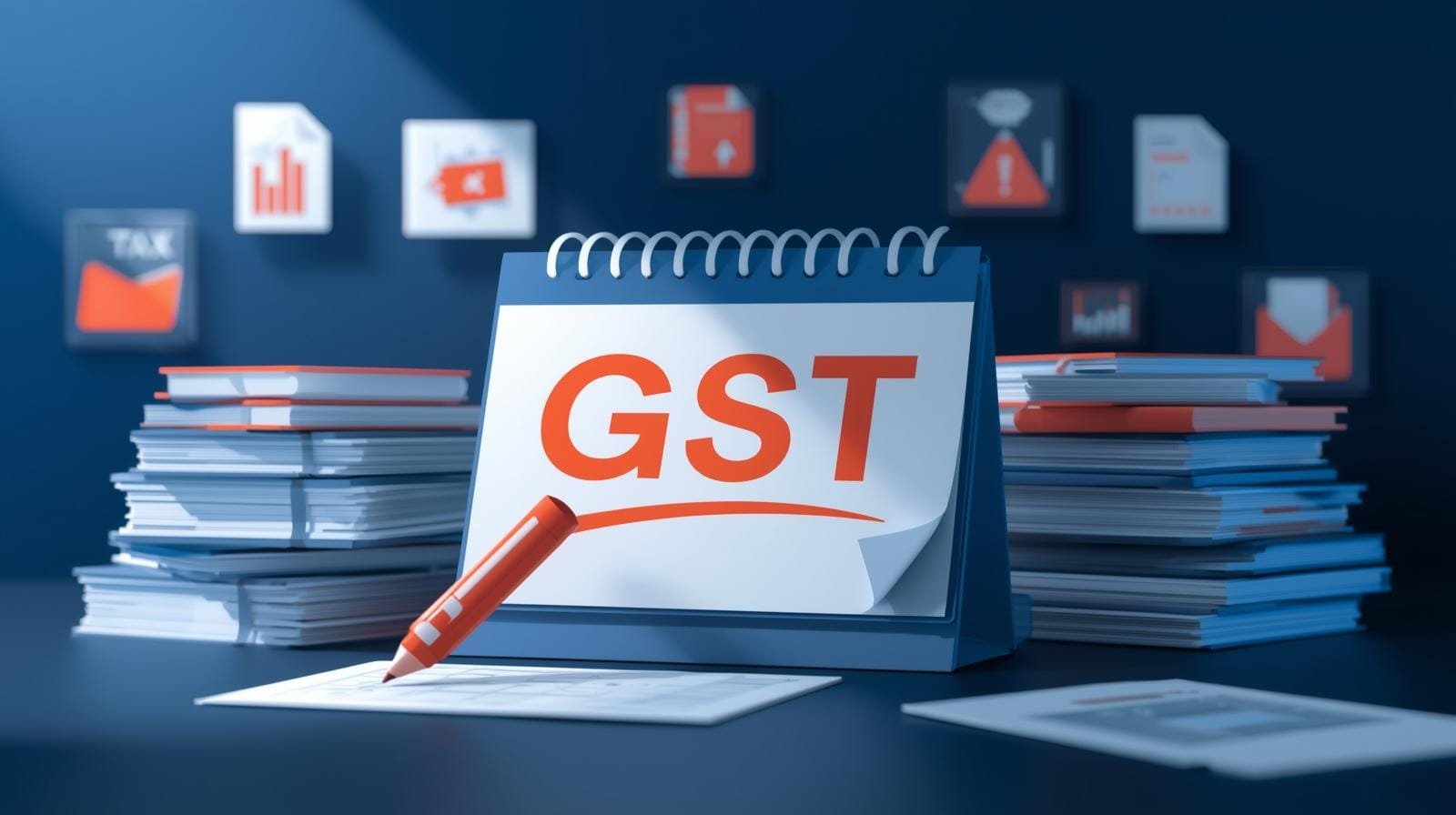File Your Pending GST Returns Before 3-Year Deadline – Important Advisory for Taxpayers
The Goods and Services Tax Network (GSTN) has issued an important advisory for all taxpayers regarding the filing of pending GST returns. As per the changes made under the Finance Act, 2023 (8 of 2023), which came into effect from 1st October 2023 through Notification No. 28/2023 – Central Tax dated 31st July 2023, a strict time limit has now been introduced for filing GST returns.
From October 2025 onwards, taxpayers will not be allowed to file GST returns after the expiry of three years from the due date of furnishing those returns. This change applies to various GST returns such as GSTR-1, GSTR-3B, GSTR-4, GSTR-5, GSTR-6, GSTR-7, GSTR-8, GSTR-9 and GSTR-9C, among others.
In this blog, we will explain this new rule in simple language, why it is important, which returns are affected, and what action taxpayers must take immediately to avoid penalties and compliance issues.
What Does the 3-Year Rule Mean?
Until now, taxpayers had the option to file their old pending returns (even if delayed) by paying late fees and interest. However, with the new amendment, once the 3-year period from the due date expires, the system will completely restrict filing of that particular GST return on the GST portal.
For example:
- If the due date for GSTR-3B for August 2022 was 20th September 2022, then the last date to file it (with late fees and interest) will be 20th September 2025. After that, the portal will not allow filing of this return.
This means taxpayers must reconcile their records and file any pending GST returns immediately to avoid permanent closure of filing.
Which GST Returns Are Covered?
The amendment covers the following sections of the GST Act:
- Section 37 – Outward Supply (GSTR-1, IFF)
- Section 39 – Payment of Liability (GSTR-3B, GSTR-4, etc.)
- Section 44 – Annual Return (GSTR-9, 9C)
- Section 52 – Tax Collected at Source (GSTR-8)
Hence, the restriction applies to the following GST forms:
- GSTR-1 / IFF
- GSTR-1 Quarterly (QRMP scheme)
- GSTR-3B (monthly)
- GSTR-3B Quarterly
- GSTR-4 (Composition scheme)
- GSTR-5 and 5A (Non-resident taxpayers and OIDAR service providers)
- GSTR-6 (Input Service Distributor)
- GSTR-7 (TDS under GST)
- GSTR-8 (TCS by e-commerce operators)
- GSTR-9 and GSTR-9C (Annual Returns and Reconciliation Statement)
Returns That Will Be Barred from October 2025
To make it simple, here’s the list of returns that will not be allowed for filing from 1st October 2025 onwards:
| GST Form | Last Period Allowed | Barred From Filing w.e.f. 1st Oct 2025 |
|---|---|---|
| GSTR-1 / IFF | August 2022 | Barred after September 2025 |
| GSTR-1Q | April – June 2022 | Barred after September 2025 |
| GSTR-3B Monthly | August 2022 | Barred after September 2025 |
| GSTR-3B Quarterly | April – June 2022 | Barred after September 2025 |
| GSTR-4 | FY 2021-22 | Barred after September 2025 |
| GSTR-5 | August 2022 | Barred after September 2025 |
| GSTR-6 | August 2022 | Barred after September 2025 |
| GSTR-7 | August 2022 | Barred after September 2025 |
| GSTR-8 | August 2022 | Barred after September 2025 |
| GSTR-9 / 9C | FY 2020-21 | Barred after September 2025 |
This clearly shows that many pending returns from FY 2020-21, FY 2021-22 and FY 2022-23 are at risk of becoming permanently non-filing after the new deadline.
Why Is This Advisory Important for Taxpayers?
There are several reasons why every taxpayer must take this advisory seriously:
- Permanent Restriction – Once the deadline passes, the return cannot be filed at all. This means the data will remain missing in the GST system forever.
- Loss of Input Tax Credit (ITC) – If outward or inward supply returns are not filed, ITC claims may get blocked or reversed.
- Compliance Risk – Non-filing of returns may invite penalties, notices, or even cancellation of GST registration.
- Financial Impact – Businesses may face issues during audits, bank financing, or government contracts if GST compliance is incomplete.
What Should Taxpayers Do Now?
Here are some practical steps every business should take immediately:
- Reconcile your GST records: Match sales, purchases, and ITC with books of accounts.
- Check pending returns: Log in to the GST portal and see if any returns are still due for FY 2020-21, FY 2021-22, or FY 2022-23.
- File before September 2025: Don’t wait till the last moment. File pending returns now and pay the applicable late fees and interest.
- Seek professional help: If you are confused about reconciliation, ITC claims, or annual returns, consult a GST expert or tax consultant.
- File pending GST returns
- GST returns 3-year deadline
- GST return filing advisory 2025
- GSTR-1, GSTR-3B, GSTR-9 filing deadline
- GST compliance India 2025
- File old GST returns before due date
- GST filing last date 2025
Conclusion
The GSTN advisory is a serious reminder for all taxpayers. From 1st October 2025, you will lose the chance to file old pending returns that are more than 3 years past their due date. Non-filing may cause penalties, ITC issues, and even cancellation of GST registration.
Therefore, it is strongly advised to reconcile your accounts and file all pending GST returns immediately. Staying compliant not only saves you from penalties but also ensures smooth business operations.
At Taxgyany, we help businesses stay updated and compliant with GST laws. If you have pending returns or need assistance in GST return filing, reconciliation, or annual return preparation, contact our team today.
Stay compliant, stay stress-free!
source :- https://services.gst.gov.in/services/advisory/advisoryandreleases

